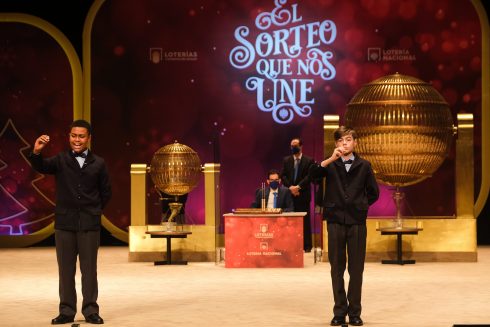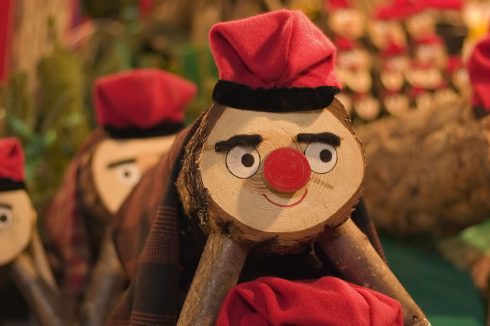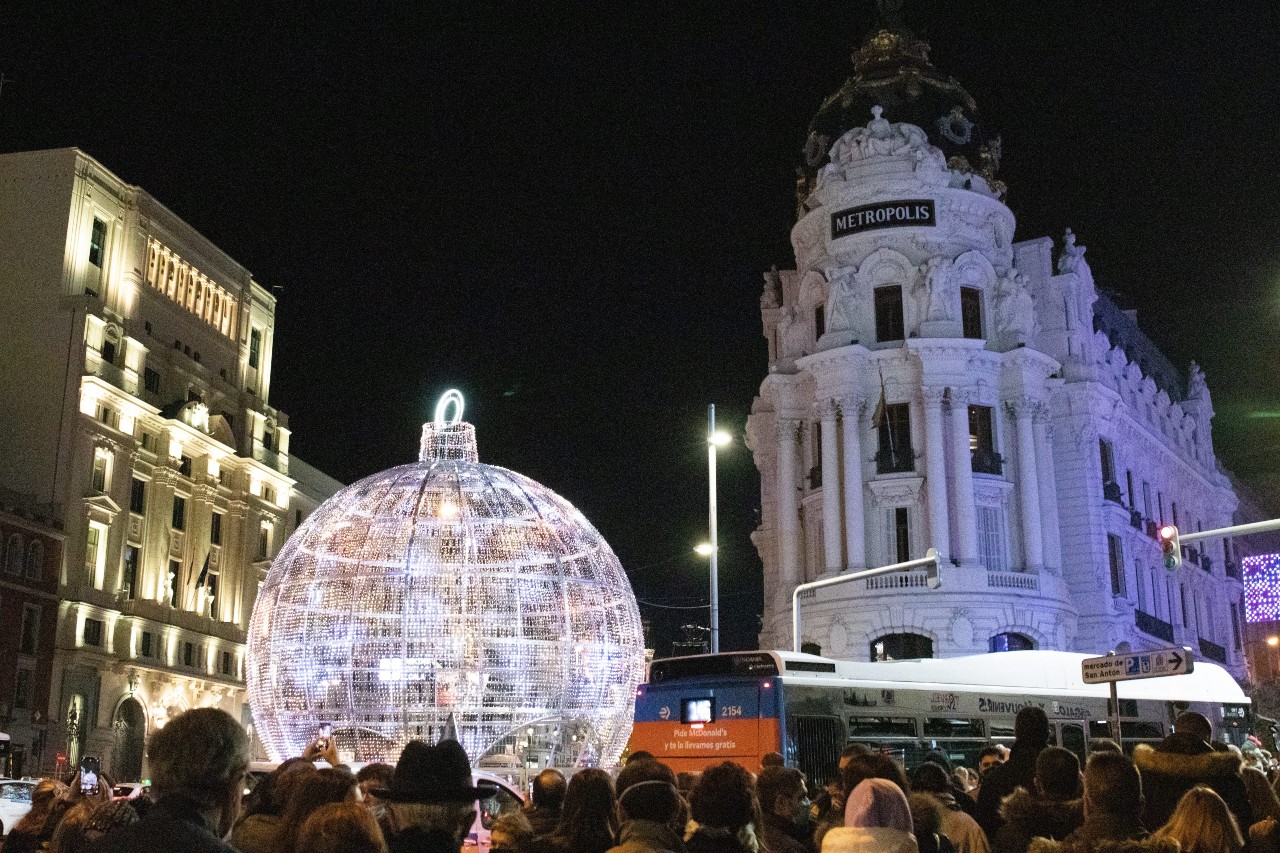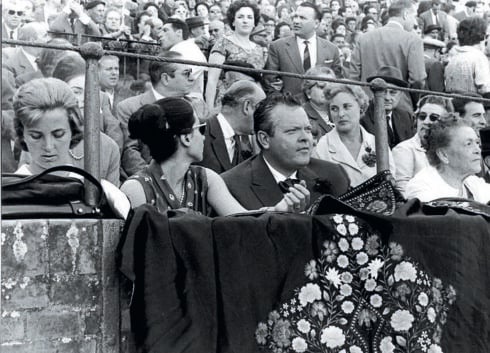Spain has a no shortage of festive traditions that differ regionally. Starting at the beginning of December and ending in January there are plenty of scrumptious treats on offer as well as parades to go and see. Here are some of the interesting traditions that make Navidad special.
Beléns – Dec 6-8

Christmas starts early in Spain when decorations go up between Constitution Day and Immaculate Conception Day (December 6 and 8). As well as trees, lights and baubles many homes and towns feature a nativity scene celebrating the birth of Christ known as Beléns. These vary from a small collection of figurines to elaborate recreations of Bethlehem featuring its landscape and the Magi. Some nativity scenes add hilariously crude elements, for example the ‘caganer’ that depicts a peasant with his trousers down doing his business. Live nativity scenes are also popular and the village of Beas in Huelva is famous for them, where its inhabitants represent over 30 biblical scenes.
Lottery – Dec 22

For many however the start of Christmas is December 22 when Spaniards gather around radios and televisions holding their tickets in hope of winning the Christmas lottery. Dating back to 1812 in Cadiz, it has been held every year since without interruption (even during the Civil War). People purchase the €20 décimos (tickets) annually from July. The draw occurs at Madrid’s Loterías y Apuestas del Estado draw room and the top prize is known as El Gordo valued at €720 million.
Food – Dec 24

On Christmas eve people across the country leave work early to gather with their families to enjoy a feast of traditional dishes. The menu differs regionally but many favour seafood or baked fish for mains as well as suckling pig and lamb. This is followed by desserts such as turron (honey and almond nougat), marzipan and polvorones (crumbly shortbread).
Mallorca mass – Dec 24

Every Christmas Eve, Christians attend a midnight mass (La Misa del Gallo) to celebrate the birth of Jesus. Mallorca does something else during the mass known as the “chant of the Sybil” ; it is recognised as Intangible Heritage by UNESCO. The chant is performed by a character dressed in a tunic, helmet and sword.
Olentzero & Apalpador – Dec 24

Instead of Father Christmas or the Magis some Spanish regions have their own gift giving friends such as the Olentzero from the Basque Country. The kind natured Olentzero loves food and drink. He lives in the forests of Navarre and the Basque Country making charcoal, but comes down on Christmas Eve to bring gifts to good children.
Head northwest and you will reach Galicia who believe in the Apalpador. The redbearded charcoal burner always carries a lit pipe in his mouth, a beret on his head and a walking stick. He is known to travel throughout Galicia on December 24 and 31ensuring everyone is fed. Originally sweets and chestnuts were given out but now small toys are also given to children.
Caga Tio log – Dec 24

This pagan rooted Catalonian tradition of the Caga Tió (Pooping log) is a log that parents give to their children in early December,on which they draw a face, cover it with a blanket to keep it warm and crown it with the typical Catalan barretina ( a red wool hat). Children give him food and look after him so that, when they sing and hit him with a stick on Christmas Eve, he poops out turron for them.
Pastorela

Every Christmas the Braojos de la Sierra municipality in Madrid dances the Pastorela. Dating back to the thirteenth century this is a pastoral dance in worship of Jesus. The dance features interesting characters such as Zarragón and instruments such as the bone xylophone.
Zambombas

Jerez de la frontera and its neighbouring towns are known for their Christmas celebrations called zambombas. The parties are centered around a bonfire, flamenco carols are sung and pestiños (fried sugar-coated dough), wine and anisette are aplenty. Carols are accompanied by tambourines and guitars, creating a beautiful and unique celebration.
Día de los Inocentes – Dec 28

Just a fews days later marks the celebration of the Día de los Inocentes on December 28. The festivities commemorates the failure of King Herod’s plan to murder all the babies in Bethlehem for fear that baby Jesus would take his throne. Throughout the day Spaniards play pranks on each other varying in extremity and many newspapers try to trick readers by publishing false articles.
New Years – Dec 31 – Jan 1

Thousands congregate in Madrid’s Puerta del Sol each year to hear its clock produce the twelve chimes that are broadcast on radio and television across Spain counting down to the new year. A popular tradition that started in 1909 is trying to eat twelve grapes to the rhythm of the clock’s chimes, in order to have a lucky year one must eat the last grape at the last toll of the bell.Champions and unlucky participants alike toast the new year with a glass of cava to wash it all down and at the end of the night a tasty portion of churros con chocolate. Another lucky talisman is the wearing of red underwear underneath one’s clothes which is said to guarantee a prosperous year.
Someone to look out for on December 31 is the ‘man with the noses’, a mythical character who has as many noses as there are left in the year. He can be seen on New Year’s Eve at midnight in Plaça de Palau, Barcelona, the only night he has a normal appearance. The next day on January 1 he will have 365 noses all over his body.
The Three Kings – Jan 5-6

Although some children await the arrival of Father Christmas this custom is not as popular in Spain. Most leave their shoes out and some food awaiting a visit from the Three Wise Men Melchior, Gaspar and Balthazar in the early hours of January 6. If a child has been naughty they will receive a lump of coal and if they have been good they will receive some gifts.Three Kings Day also marks the end of Christmas in Spain.
The celebration begins on January 5 with the Cavalcade of the Magi, parades that are organised all over Spain. Children can see the three Wise Men, their camels, and other magical characters parade around and throw sweets to them.
It is also customary to share a Roscón de Reyes, a sweet ring shaped treat filled with cream and candied fruits. The treat also contains two items, there is a small figurine and whoever finds it is crowned king of the house for the day and a dried bean which is supposed to bring bad luck to its finder.
READ MORE:
- GOOD ENOUGH TO EAT: Spain’s giant chocolate nativity scene and other Christmas traditions
- Madrid hotel transforms gardens into ice skating rink for Christmas season
- Spain’s Christmas Lottery campaign is launched with the focus on ‘extraordinary stories’
Click here to read more La Cultura News from The Olive Press.








